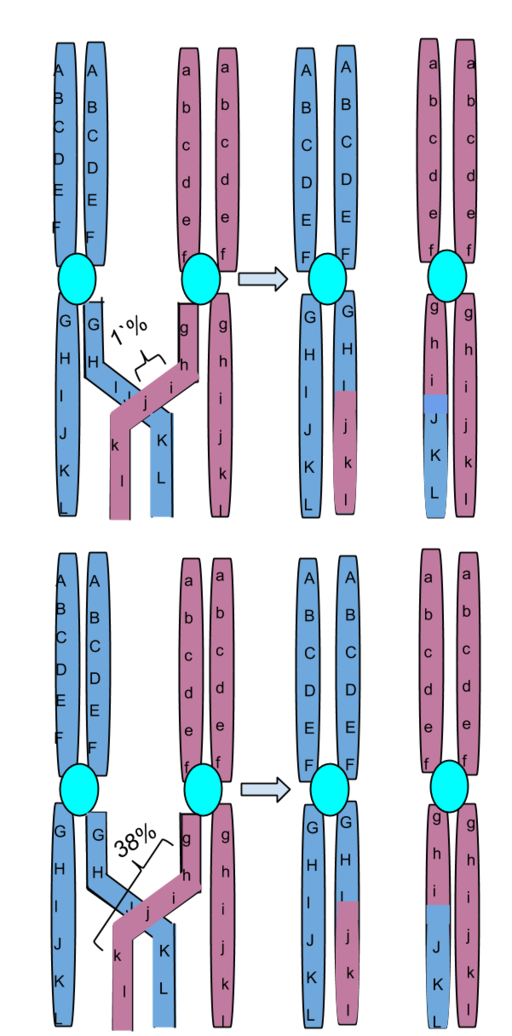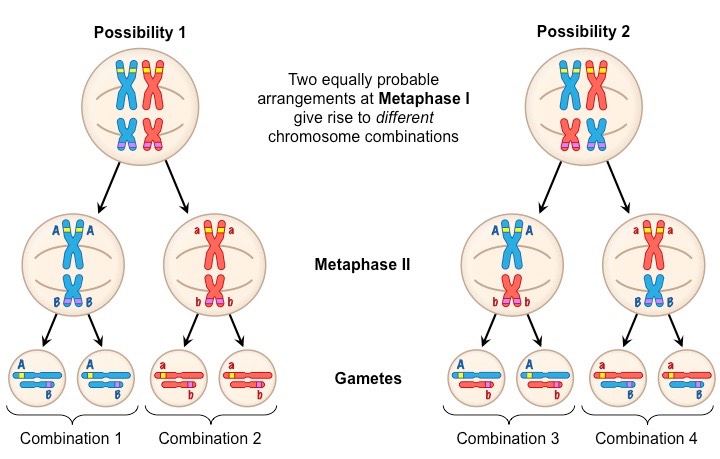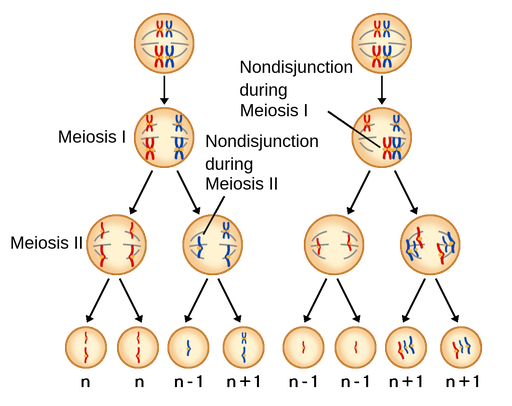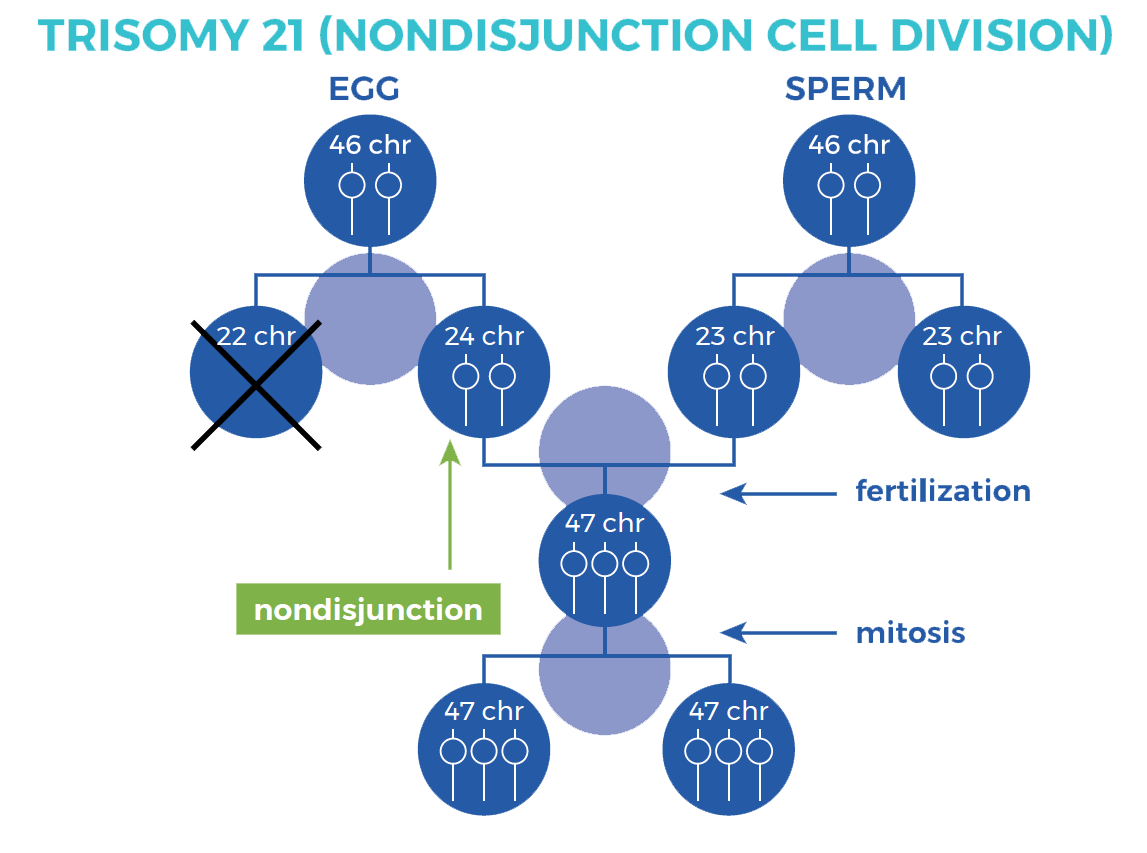Caroline Koffke
Haseung Jun
AP Biology 🧬
358 resourcesSee Units
There are a few key concepts within meiosis that contribute to genetic diversity. Remember that diversity is the key to life. When all else fails, focus on diversity in your answers for the AP exam.
Some key contributors to genetic diversity in meiosis are the concepts of crossing over, independent assortment, and random fertilization.
Crossing Over
Crossing over is an incredibly important process that takes place during the first round of cellular division in meiosis.
During this process, homologous chromosomes share genetic material. Remember that homologous chromosomes are two different versions of the same chromosome. For instance, chromosome 2 might have the gene for eye color. Each individual has two versions of chromosome 2, one from mom and one from dad. One version might have a dominant allele for eye color, and the other might have a recessive allele.
During the process of crossing over, homologous chromosomes exchange parts of their chromosome at the same location, therefore, not adding or subtracting genes, just exchanging versions of the gene.
A more specific example of crossing over is shown below:

Image courtesy of WikiMedia Commons.
This exchange of genetic material leads to numerous possibilities for the separation of chromosomes and the resulting daughter cells. This can also be seen at the end of the diagram shown in section 1.
Independent Assortment
Independent assortment refers to the way that chromosomes line up for both the first and second rounds of division in meiosis. In the example below, there is a 50% chance that both blue versions of the chromosomes will line up on the same side, as shown by possibility 1. There is a 50% chance that a blue and a red version of each chromosome will line up on the same side, as shown by possibility 2.
Depending on the original orientation of these chromosomes, different daughter cells will form. This can be shown by the four unique combinations of chromosomes shown in the row of gametes.

Image courtesy of BioNinja.
The random alignment of chromosomes during metaphase contributes to an immense amount of variation. The amount can be quantified using the following formula:

For humans, independent assortment results in 2^23, or 8,388,608, unique egg or sperm that one individual can produce. This does not include the variation that crossing over and random fertilization contribute as well.
Random Fertilization
Random fertilization simply means that there is a random chance that each egg and sperm will join one another. There are potentially thousands of sperm that can fertilize the one mature egg, and the genetics in each of them is distinct. The specific sperm that joins the specific egg for each fertilization is random, meaning that the same two parents are not going to produce the same child twice.
Nondisjunction
There is a special type of "genetic diveristy" which involves meiotic errors 😨. Though not ideal with meiosis, nondisjunction creates cells with too many or too little chromosomes. This can happen if the chromosomes failed to separate properly during anaphase I or II.

Image Courtesy of Labster Theory
If nondisjunction happens during meiosis I, the all of the resulting haploid cells will have abnormal amounts of chromosomes. If nondisjunction happens during meiosis II, only two haploid cells are affected. The other two will have the normal amount, n, but the other two will either have one extra or one less.
When a gamete is produced with abnormal number of chromosomes, they often end in miscarriages or genetic defects. A prime example of nondisjunction is Down sydrome. Individuals with Down syndrome have an extra copy of the 21st chromosome, so they would be the example of the n+1 situation.

Image Courtesy of CMDSS
Ending Notes
Remember, there are 3 factors of genetic diversity that College Board focuses on: crossing over, independent assortment, and random fertilization. The sole purpose of meiosis is creating genetic variation, so these three are crucial to understand in order to understand the purpose of meiosis. Chances are, you'll see a question about genetic variation on a FRQ.
Nondisjunction is a meiotic error which causes most genetic defects. Depending on when the nondisjunction happened, you'll have 4 or 2 haploid cells that have too many or too little chromosomes.
Browse Study Guides By Unit
🧪Unit 1 – Chemistry of Life
🧬Unit 2 – Cell Structure & Function
🔋Unit 3 – Cellular Energetics
🦠Unit 4 – Cell Communication & Cell Cycle
👪Unit 5 – Heredity
👻Unit 6 – Gene Expression & Regulation
🦍Unit 7 – Natural Selection
🌲Unit 8 – Ecology
📚Study Tools
🧐Exam Skills

Fiveable
Resources
© 2025 Fiveable Inc. All rights reserved.